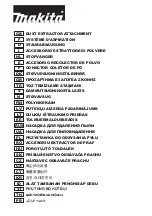
21
Alt-Az
This is the default tracking rate and is used when the telescope is placed on
a flat surface or tripod without the use of an equatorial wedge.
The
telescope must be aligned with two stars before it can track in altazimuth
(Alt-Az).
EQ North
Used to track the sky when the telescope is polar aligned using an
equatorial wedge in the Northern Hemisphere.
EQ South
Used to track the sky when the telescope is polar aligned using an
equatorial wedge in the Southern Hemisphere.
Off
When using the telescope for terrestrial (land) observation, the tracking
can be turned off so that the telescope never moves.
Tracking Rate
In addition to being able to move the telescope with the hand control buttons, the NexStar will
continually track a celestial object as it moves across the night sky. The tracking rate can be
changed depending on what type of object is being observed:
Sidereal
This rate compensates for the rotation of the Earth by moving the
telescope at the same rate as the rotation of the Earth, but in the opposite
direction. When the telescope is polar aligned, this can be accomplished
by moving the telescope in right ascension only. When mounted in Alt-
Az mode, the telescope must make corrections in both R.A. and
declination.
Lunar
Used for tracking the moon when observing the lunar landscape.
Solar
Used for tracking the Sun when solar observing.
View Time-Site
- Displays the current time and longitude/latitude downloaded from the GPS receiver.
View Time-Site
will
always display the last saved time and location entered while it is linking with the GPS. Once current information has been
received, it will update the displayed information. If GPS is switched off, the hand control will only display the last saved time
and location.
Setup Time-Site
-
Allows the user to customize the NexStar display by changing time and location parameters (such as time
zone and daylight savings).
Sidereal Time
–
Displays the Sidereal time for your current time and location. This is useful for knowing the right ascension
of celestial objects that are located on the local meridian at that time.
Filter Limits
– When an alignment is complete, the NexStar automatically knows which celestial objects are above the
horizon. As a result, when scrolling through the database lists (or selecting the Tour function), the NexStar hand control will
display only those objects that are known to be above the horizon when you are observing. You can customize the object
database by selecting altitude limits that are appropriate for your location and situation. For example, if you are observing from a
mountainous location where the horizon is partially obscured, you can set your minimum altitude limit to read +20º. This will
make sure that the hand control only displays objects that are higher in altitude than 20º. If you manually enter an object that is
below the horizon using the numeric keypad, the hand control will display a warning message before slewing to the object.
If you want to explore the entire object database, set the maximum altitude limit to 90º and the minimum limit to –90º.
This will display every object in the database lists regardless of whether it is visible in the sky from your location.
User Defined Objects
- The NexStar can store up to 50 different user defined objects in its memory. The objects
can be daytime land objects or an interesting celestial object that you discover that is not included
in the regular database. There are several ways to save an object to memory depending on what
type of object it is:
Save Sky Object:
The NexStar stores celestial objects to its database by saving its right ascension and declination in
the sky. This way the same object can be found each time the telescope is aligned. Once a
Observing
Tip!
Содержание NexStar 11
Страница 1: ...I IN NS ST TR RU UC CT TI IO ON N M MA AN NU UA AL L...
Страница 61: ...61 APPENDIX E MAPS OF TIME ZONES...
Страница 62: ...62...
Страница 63: ...63...
Страница 64: ...64...
Страница 65: ...65...
Страница 66: ...66...
Страница 67: ...67...
Страница 68: ...68...
















































